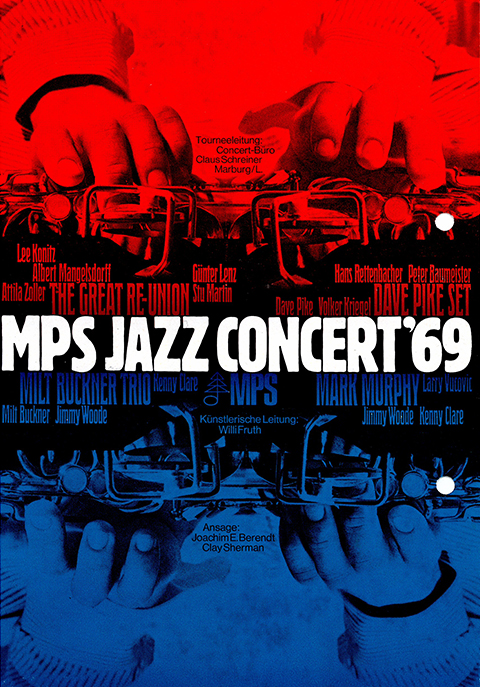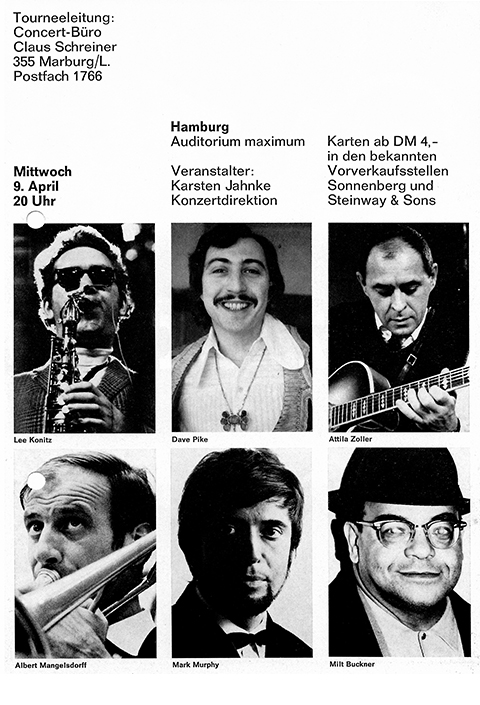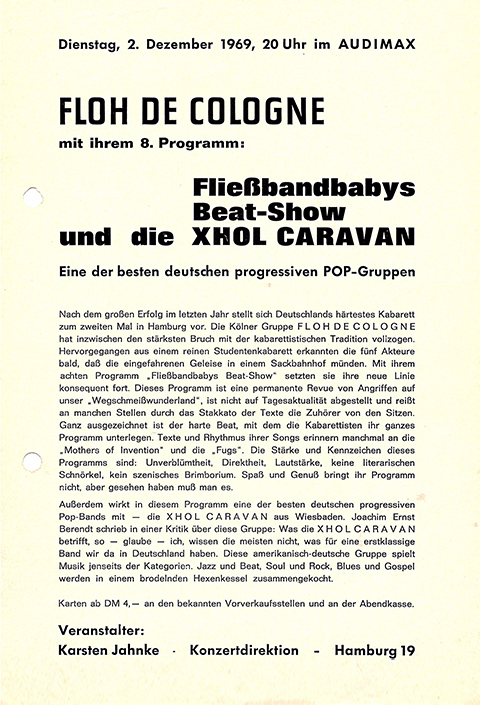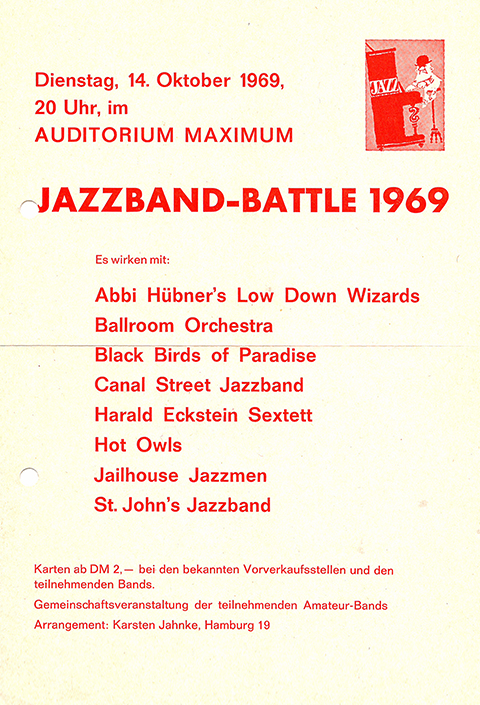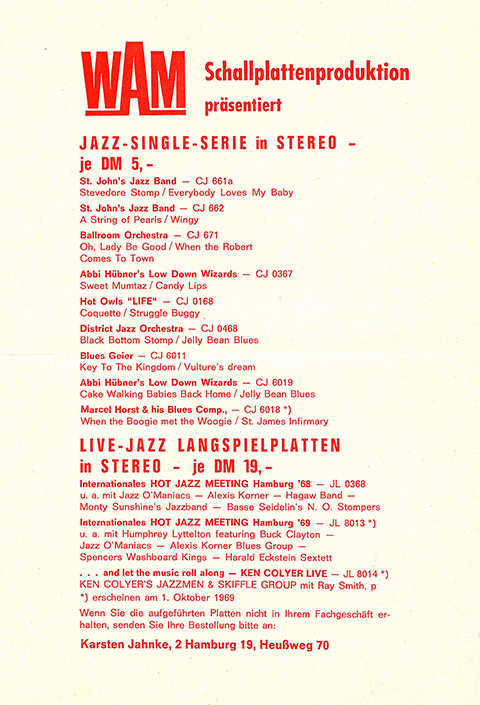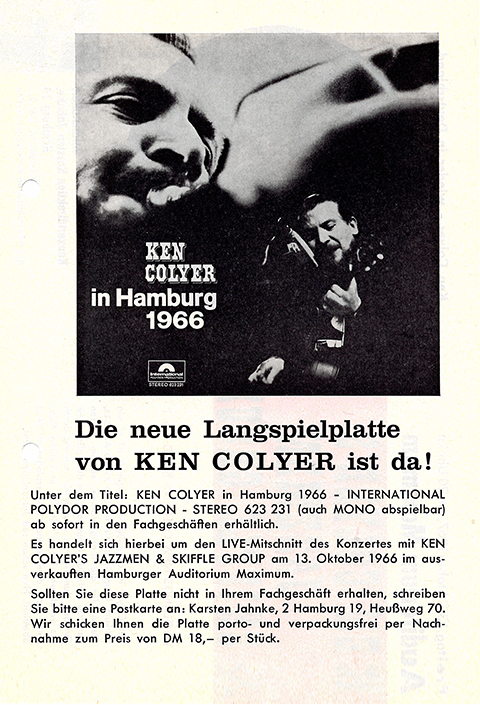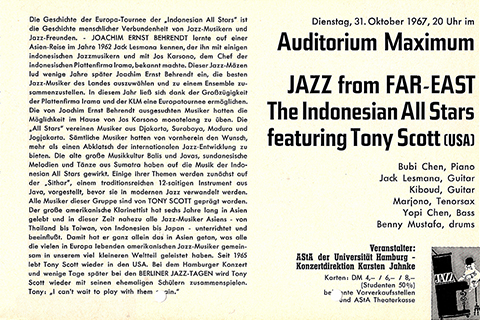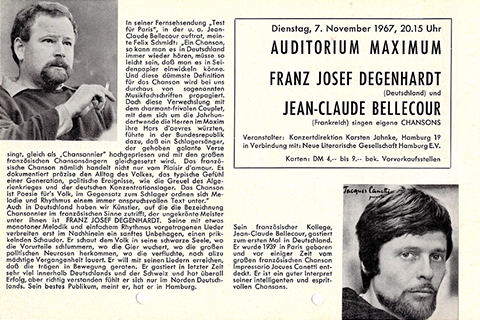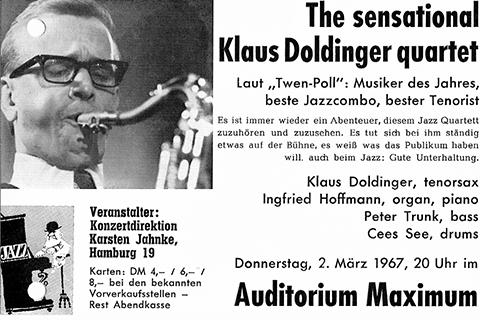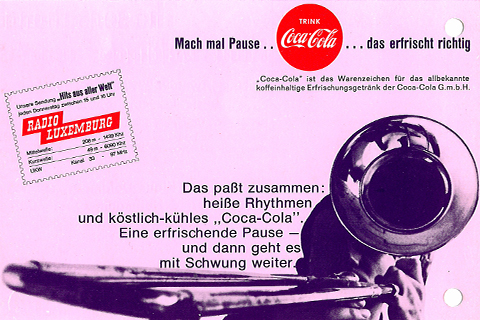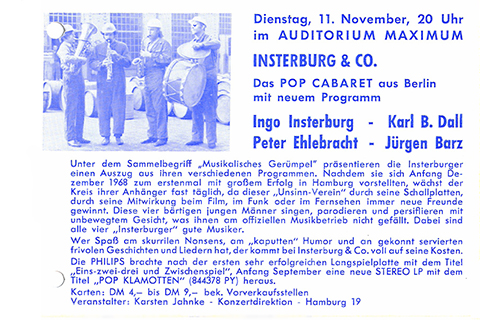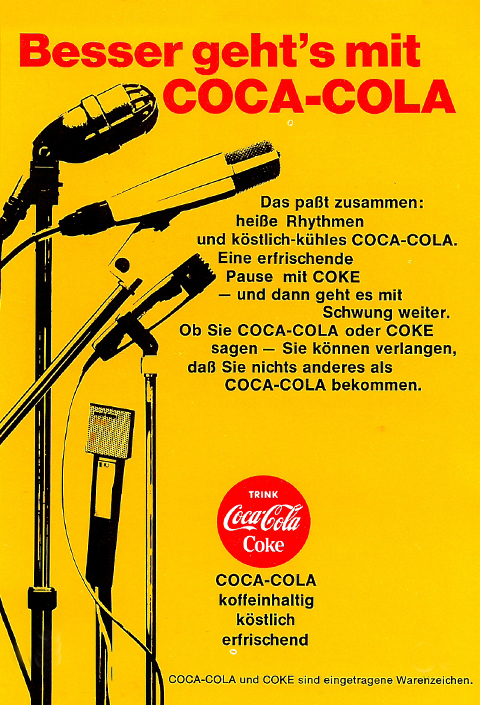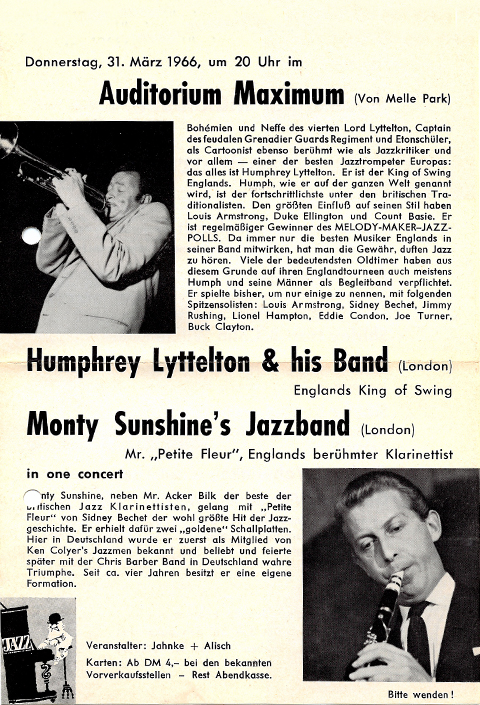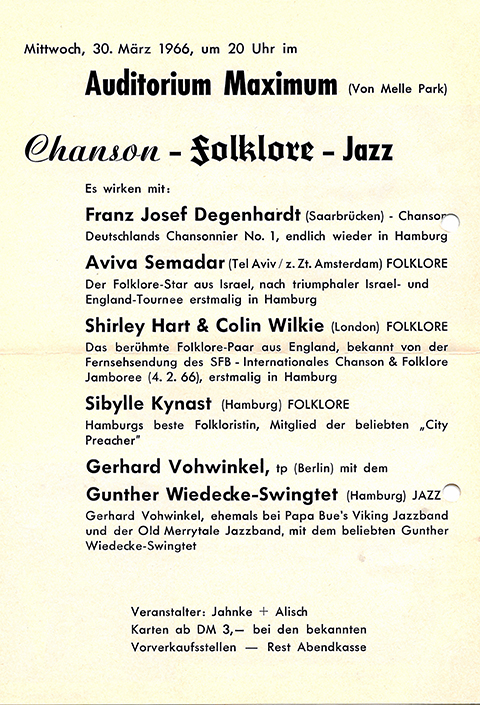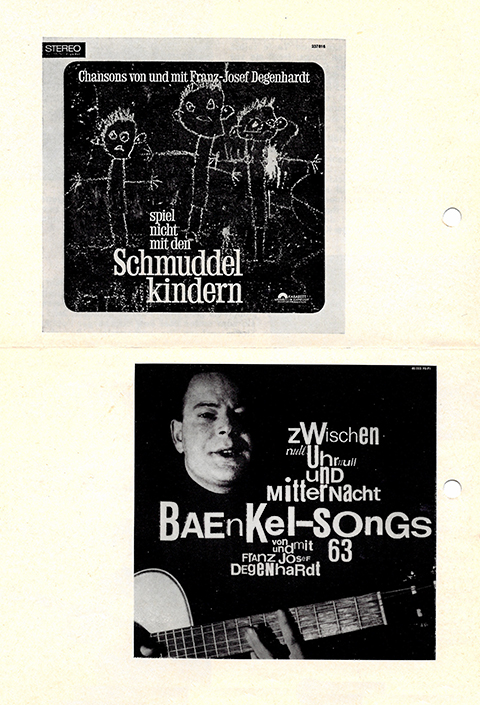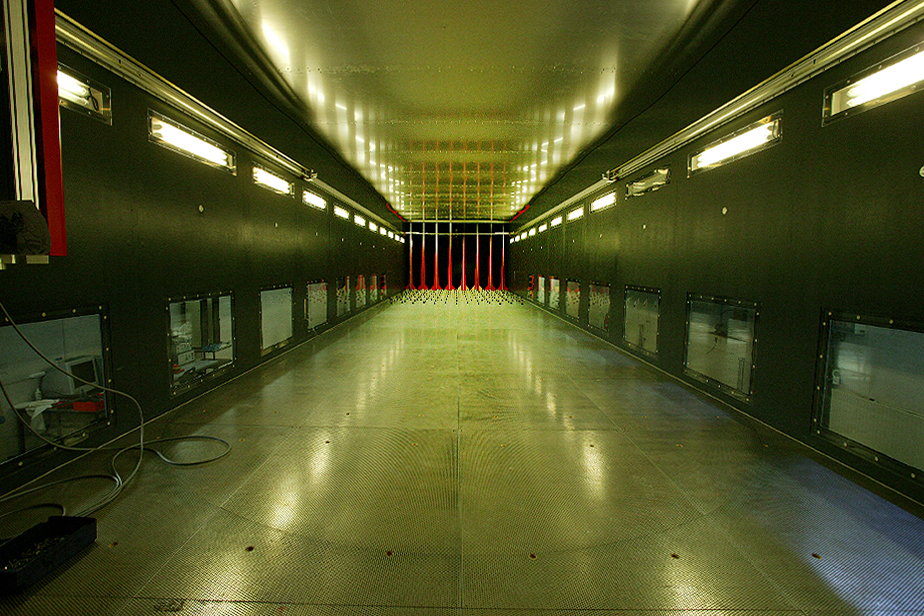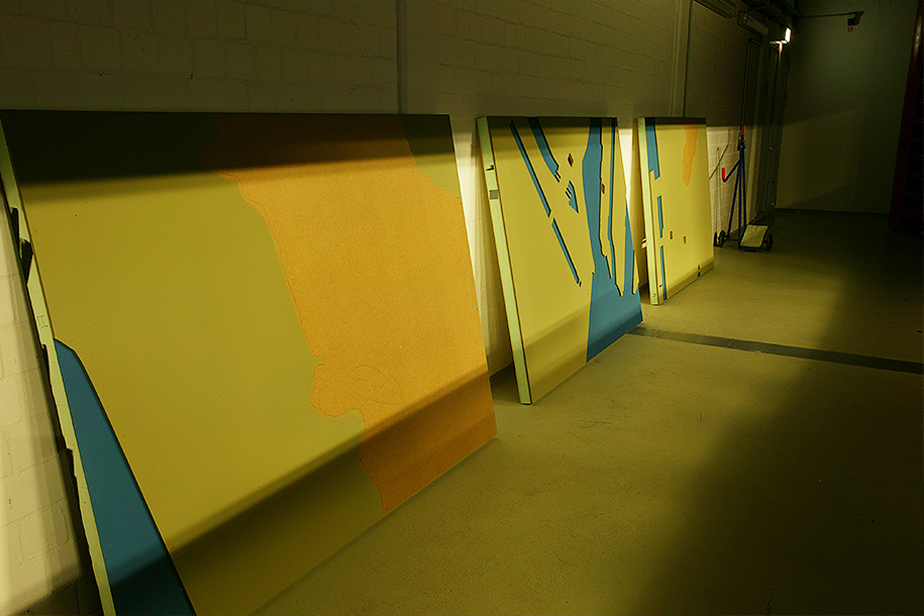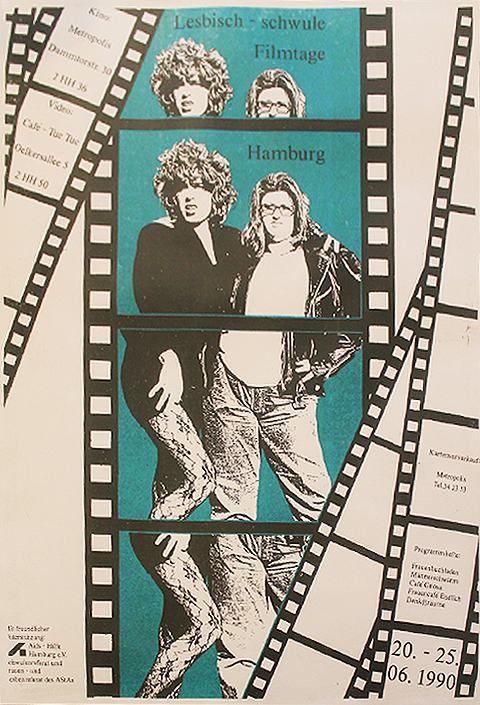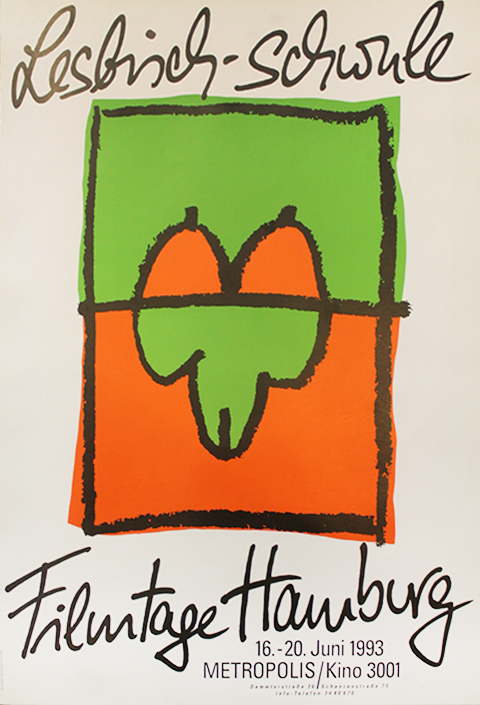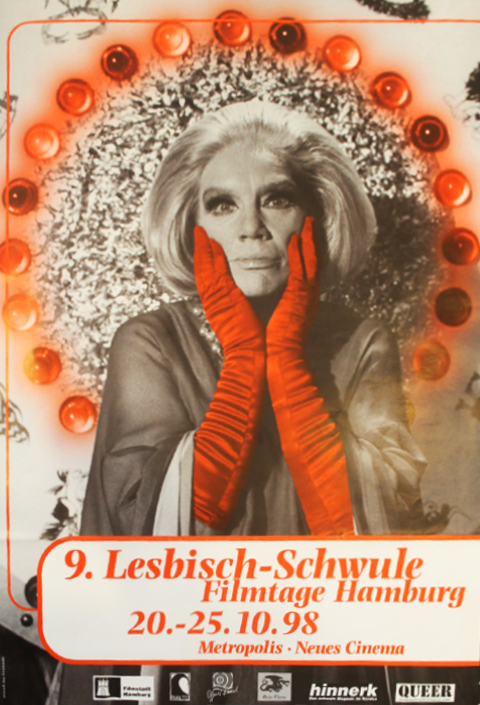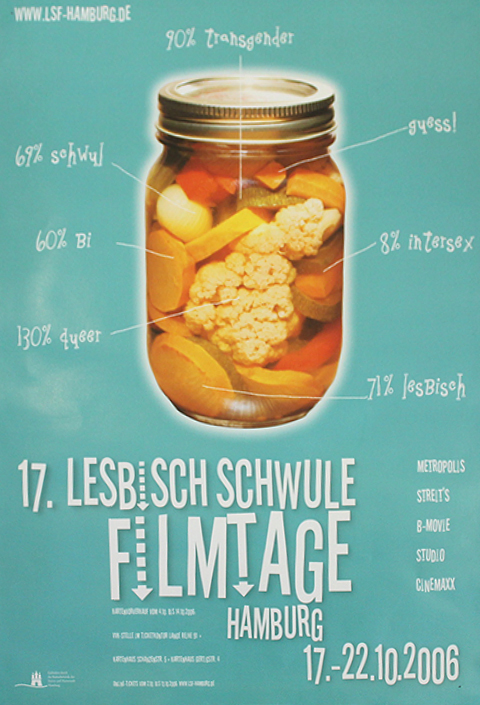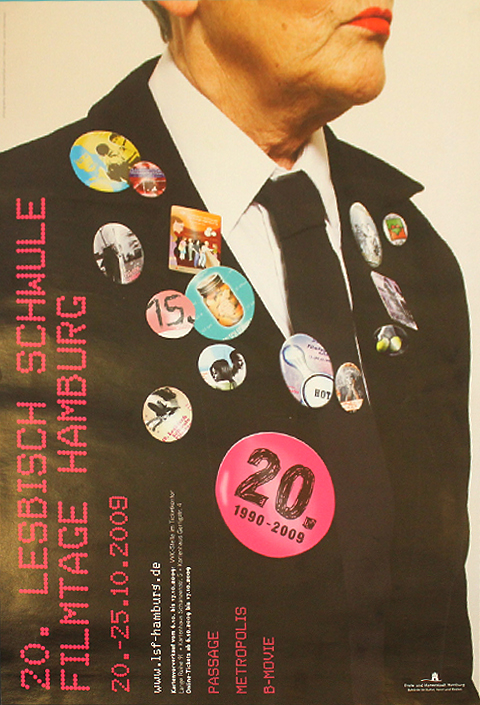Special Exhibition
The university and the city—A great team
When it was founded in 1919, the University already had close ties to the city, thanks to the seminars and a few of the scientific institutes that had already been founded in Hamburg and that formed the University’s basis. The University also owed its first-rate scientific collections not to some princely cabinet of wonders but to Hamburg citizens’ intellectual curiosity and passion for collecting.
From its very beginnings, the University has worked with other municipal institutions, enjoyed generous support, financial and otherwise, from various sources, and, in turn, has happily shar ed ist findings with young and old alike. Sometimes members of the University conduct research side-by-side with members of the Hamburg public. Examples include an urban nature day or the ninety-five-part newspaper series calling on readers to send in definitions of Low German terms—a cooperation with Jürgen Meier, a professor at the University.
Mineralogical office hours
Young and old alike make great use of the Mineralogical Museum’s services and outreach programs. Once you register, you can have your own finds—whether minerals, rocks, meteorites, or pearls—identified. If identification does not require more elaborate analyses, the service is free. A Hamburg resident brought these pieces containing hematite—a common mineral also known as “bloodstone”—for an expert evaluation and decided to leave them to the Museum.
A joint effort
Is the skull found in 1878 on Grasbrook really that of the legendary pirate Klaus Störtebeker, who was beheaded in 1401 in Hamburg? As the owner of the skull, the Museum of Hamburg History wanted to know the answer to this very question. The University’s Institute of Legal Medicine lent a hand in clearing up the mystery, but was unable to reach a definitive conclusion. The only thing that is certain is that the skull was of an approximately thirty-year-old pirate beheaded around 1400. This was a special case for the Department of Legal Medicine—it is more often called upon to help with current cases of violent death.
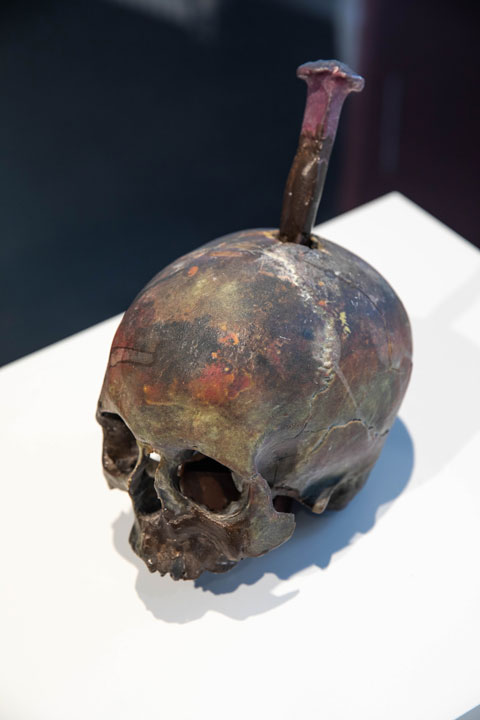
Reform efforts at the Hahnöfersand Juvenile Detention Center
At the beginning of the 1920s, Walter Hermann and Curt Bondy, two young Hamburg social scientists, made an influential attempt at reforming Hamburg’s juvenile detention center. For two years, they worked as guards at the juvenile prison on the Hahnöfersand Elbe Island. They tried to put their theories into practice, using education rather than punishment to help the adolescent offenders. Ultimately, their efforts failed due to political opposition. Nonetheless, their work was a milestone in the reform of juvenile detention. Hermann wrote a much-lauded dissertation, while Bondy wrote his Habilitation (post-graduate thesis) on the experiment.
The Audimax makes music history
From the 1970s to the 1990s, the University’s largest lecture hall, with 1,700 seats, was also a venue for international bands. AC/DC, Meat Loaf, Tom Waits, and many others drew music fans from near and far to the Von-Melle campus. This bootleg recording is from the March 1970 Pink Floyd concert. The bootleg recording is still being pressed today, most recently on Record Store Day in Italy in 2014.
„Kannst du mi dat vertelln?“
The Hamburger Abendblatt newspaper posed this question (“Can you tell me what it means?” in Lower German) to its readers in a ninety-five-part series between 1978 and 1981. The driving force behind the series was Professor Jürgen Meier, who, as head of the Research Center for the Low German Hamburg Dictionary, collected Low German words and their meanings. Like Putzlaputz, a girl Friday. Reader replies fill five card boxes like this one. The answers were stored on index cards in the archive and then published in the dictionary. Agathe Lasch, who was one of the founders of the Research Center, also sought information from the general public in the 1920s.
Loki Schmidt House
The distinguished botanist Emil Heitz used these porcelain filters in the late 1920s to conduct his color experiments on plant DNA. The botanical museum, which has been part of the University since 1919, boasts a unique collection of historical objects. Its exhibitions give the public a close look at the history of botanical research and, above all, the importance of economic plants. Since 2007, the museum, named after Loki Schmidt, has been located in the middle of the Loki Schmidt Garden in Klein-Flottbek. It is open to the public on Thursdays and Sundays from March to October.
Private and municipal collections
The origins of the University’s scientific collections are many and diverse. For example, the fruit and seed collection of the Hamburg physician Heinrich Wilhelm Bueck forms the foundation of the botanical museum, while the zoologist Georg Duncker donated the green tree python and other specimens from his South Seas expeditions (1908–10) to the natural history museum. Many objects hail from the teaching and research collections of former state institutes, such as the Mineralogical-Geological Institute, to which the geoscientist C.A.J. Plagemann bequeathed his mineral collection in 1910.
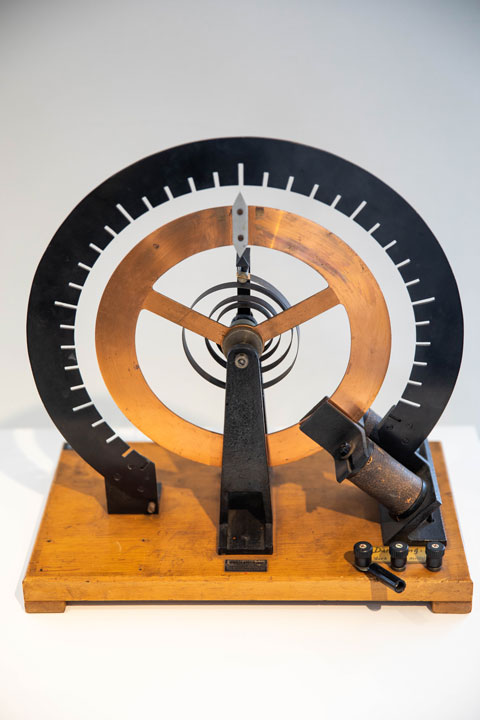
University Music for all
The choirs and orchestras of University Music give regular concerts for Hamburg’s music lovers. What many people do not know, however, is that University Music also loans instruments, for example to refugees, who can also take free music lessons. Professor Jürgen Jürgens, who headed what would later be called University Music from 1962 to 1994, established a collection of valuable Baroque instruments that are also loaned regularly to various Baroque music ensembles.
Life-saving knowledge
How does a noxious cloud move through a city? The team from the University’s wind tunnel laboratory went in search of the answer to develop a software product for the Hamburg Fire Department in cooperation with the US Naval Research Laboratory. The Institute of Meteorology’s precision mechanics workshop built a model of Hamburg’s downtown area.
It was placed in the wind tunnel to test how wind close to the ground moves in different types of weather. The program is now ready for use. With it, the Fire Department can determine sources of danger and initiate preventative measures like evacuations in good time.
“Arena of Scholarship”
This is what Aby Warburg called the central room of his private library, built in 1925–26 in Hamburg. The art historian and cultural theorist wished it to be in the form of an ellipse. It was both a lecture hall and a reading room. Stocked with countless books and equipped with the latest technology, the library became a forum for scholarly exchange. Professors and students from the young University could often be found there. In 1933, the institution was closed and the entire library shipped to London. In 1995, the Warburg Haus re-opened in Hamburg. As a cooperative project between the Aby Warburg Foundation and the University, it continues the tradition of the original institution.
A special present
For its 100th anniversary, the comedian Otto Waalkes gave the University a drawing of an “Ottifant” (a neologism created from the words “Otto” and “elephant”) that he created especially for the occasion. Waalkes not only studied at Universität Hamburg; he also launched his career here. The recording of his 1972 show at the Audimax appeared one year later as a record and made the comedian famous throughout Germany.
Mineralogical Museum
This colorful find from the Greek mines of Laurion is made up of different materials: cornflower blue azurite, green olivenite, glassy calcite, yellow-green agardite, and brownish limonite. It is one of over 90,000 objects in the collection of the Mineralogical Museum on Grindelallee. Every Wednesday and Sunday, visitors can admire roughly 1,500 objects, including several meteorites, spread over two floors. The collection has its origins in the seventeenth-century mineral collection of Joachim Jungius, the rector of the prestigious Johanneum, a humanistic secondary school in Hamburg.
Public Bug Hunt
Around 100 Hamburg citizens participated in the 2019 Long Day of Urban Nature at the Georgswerder landfill. Some used sticks to hit tree limbs, dislodging insects then caught by others using beating nets. The insects were transported in specimen bottles filled with alcohol. For the past three years, participants have helped the University’s Center of Natural History study biodiversity at the former garbage dump. Again and again, endangered species like the Wall, a butterfly, are found in Hamburg.
What swims where in Hamburg?
Hamburg’s waters are home to fifty-seven fish and lamprey species, including seven that have migrated from other regions and are thus invasive species. Take, for example, the Caspian round goby that hails from the Black Sea and was discovered in the Port of Hamburg in 2008. The Hamburg fish atlas was developed in the time-proven cooperation between the Ministry of Urban Development and Environment and the Center of Natural History (CeNak). It documents current species, indicates those that are endangered, and names possible protective measures.
Understanding Modern Art
In 1981, Hamburg’s Ministry of Culture initiated a public art program. You can find many of the artworks created for this project on this map. It is part of a book edited and published by Uwe Fleckner, a professor in the Art History Seminar at Universität Hamburg, in 2007. You can also leaf through the volume entitled Kunst in der Stadt Hamburg on the neighboring lectern.
A lecture building for the city
For the opening of the lecture building in 1911, later the University’s Main Building, Edmund Siemers published a Festschrift to introduce the building to the general public. Many years earlier, the entrepreneur donated 1.5 million Reichsmarks to Hamburg to fund the founding of a university. The representative building was intended for the General Lecture Series and, in line with Siemers’ own wishes, erected at the centrally located Moorweide. Thanks to the generosity of a foundation, the two wings were added about ninety years later.
Welcome to the Children’s University Lectures
Every fall since 2002, children from elementary and middle schools have been able to feel like real university students and get a student ID and stamps for the lectures they attend. In six lectures, scholars and scientists from Universität Hamburg introduce their young listeners to exciting topics. For example, in 2018, participants could find out how Caribbean pirates lived or why our hearts beat. The lecture series concludes every year with a science show. Various partners, including the children’s magazine Geolino, support this project.
A rich tradition of cooperation
This almanac was conceived to “build a bridge between the Museum and the University,” according to Werner Hofmann, director of the Hamburger Kunsthalle, and Martin Warnke, professor of art history, in their foreword to the last edition. The art journal’s name, IDEA, comes from the title of a famous essay by Erwin Panofsky that he wrote during his tenure in Hamburg. In 1926, the art historian was the first professor in this field and was permitted to use the Museum’s rooms and slides for his lectures. Like Panofsky, the almanac aims to break down boundaries and integrate other disciplines.
A “powerful preacher”
Helmut Thielicke, who joined Universität Hamburg as one of the founding deans of the Theological Faculty in 1954, not only filled lecture halls; he also filled the pews of St. Jacobi and, when that became too small, St. Michael’s, two of Hamburg’s major churches. There were even times when members of the Hamburg public attended his sermons twice a week. This recording comes from a ten-part lecture and discussion series on Christian faith held in St. Michael’s. The professor of systematic theology consistently reached an audience of 2,000.
Zoological Museum
Visitors can admire numerous specimens of exotic and native fauna in the Zoological Museum on Bundesstraße. The exhibition appeals to both children and adults and is open every day except Mondays. The museum devotes 2,000 square meters to species diversity—how it evolved and what threatens it. The zoological collection has its origins in the Hamburg natural history museum founded in 1843. It has been a part of the University since 1969. This gannet is one of its 10 million objects. Helgoland has been a breeding ground for this huge ocean bird for about thirty years.
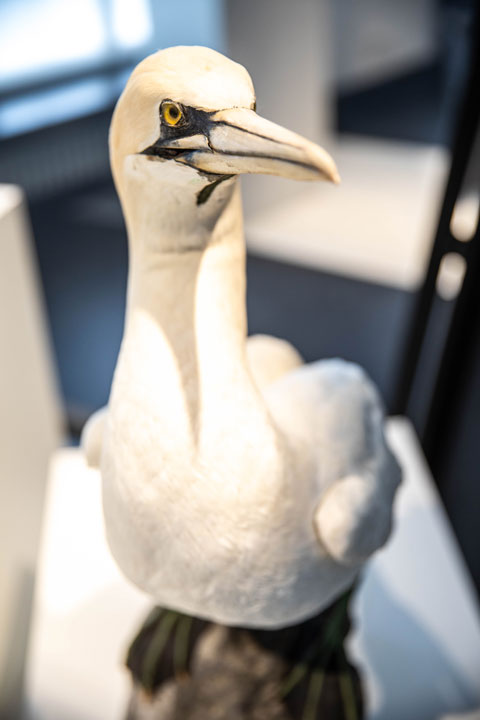
From strike seminar to film festival
Ursula, Globola, and Dokula—these are the names of the audience awards at the Hamburg International Queer Film Festival. The artist Birgit Neppl designed this Ursula using a Barbie doll. Germany’s largest queer film festival has its origins in a student initiative at Universität Hamburg. During the university strike in the Winter Semester 1988/89, students organized a seminar on what was then a little-studied topic of homosexuality in films. This seminar eventually led to the first Hamburg International Queer Film Festival in 1990, in cooperation with the Metropolis cinema. In 2019, the festival celebrated its thirtieth anniversary.
From the lecture hall to the pub
Kick back, have a beer, and learn something while you’re at it: Are we all made of stardust? Does capital have a conscience? Do nano-particles make us healthy? How quick are first impressions? After work, scientists and scholars from the University and DESY explain what they do and discuss their pursuits with the public. Science on Tap has taken place annually since 2015. Over fifty bars, cafés, and pubs take part, including the Pony Bar, located directly on the Von-Melle campus, and the St. Pauli Museum bar.
Local “Leopard Sand”
This is a lacquer profile of a soil sample from the excavation site of the Volksdorf swimming pool. These kinds of lacquer peels conserve the natural structure and texture of the ground in microscopic detail and provide a glimpse of Earth’s history. This is an example of sand with precipitates of iron and manganese from the Saale cold period. The iron and manganese precipitates gives the sample its leopard-skin-like structure. The specimen belongs to the Geological-Paleontological Museum’s lacquer peel collection and gives a glimpse of the 300,000-year-old Saale cold period that once covered the northern German lowlands in ice.
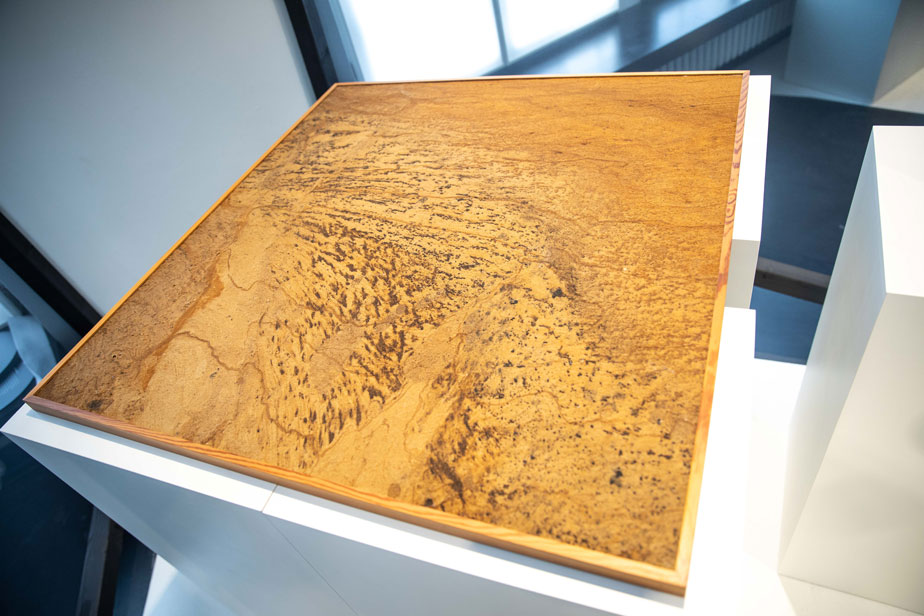
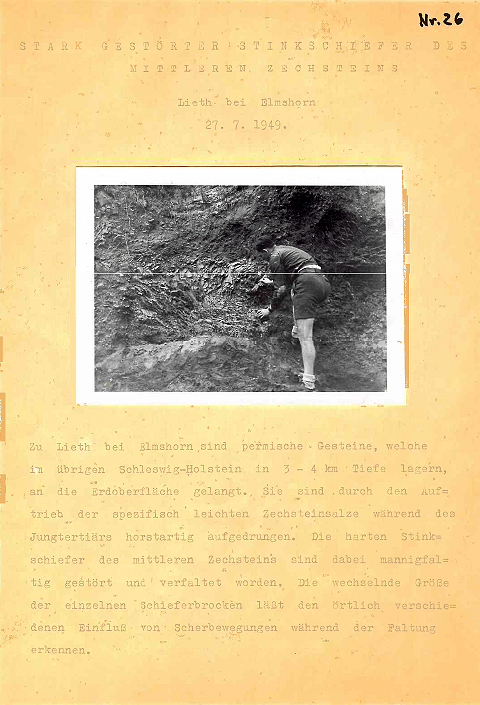
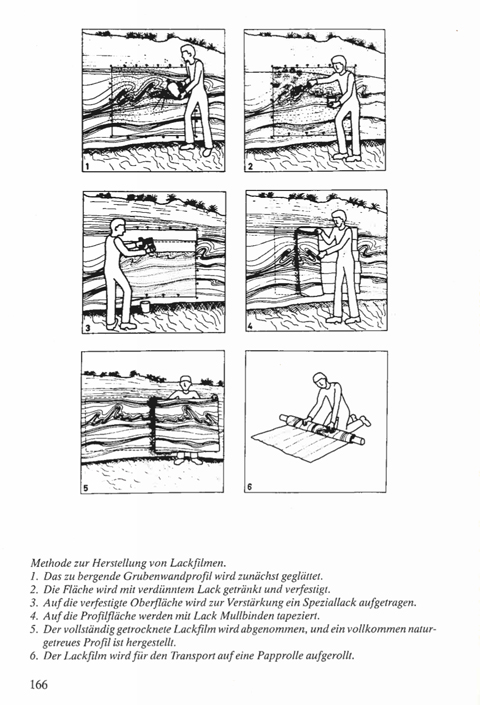
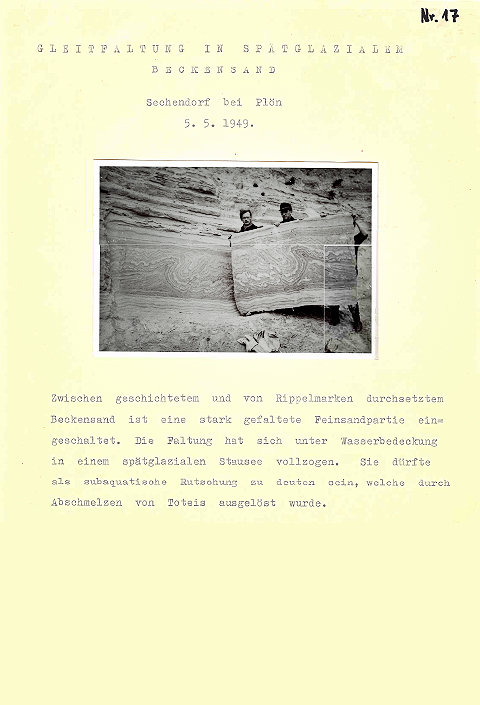
Hamburg’s plant history
These cycad cones are believed to hail from the nineteenth century. They can still be admired in the greenhouses at Planten un Blomen. It was there, at Dammtor, that the botanist Johann Georg Christian Lehmann founded the first botanical garden in 1821. The botanical garden now belongs to the University and most of it—like the Herbarium that the cones come from—is located in Klein Flottbek. In 1834, Lehmann was the first to describe the genus Encephalartos and probably also the first to cultivate the cycad.
Hamburg Observatory
The Observatory purchased this spectrograph, produced in England, for 4,500 German marks in 1912. The optical instrument was used by the Observatory’s astronomers as an observation tool. It splits the light of the stars captured by a telescope into its spectrum and transmits it onto a photo plate. The Observatory was founded as a state institute in 1833. It only became part of the University in 1968. In 1912, it moved to its current location in Bergedorf. The ensemble, with its Baroque Revival domed buildings, is now a listed monument open to visitors on the weekends.
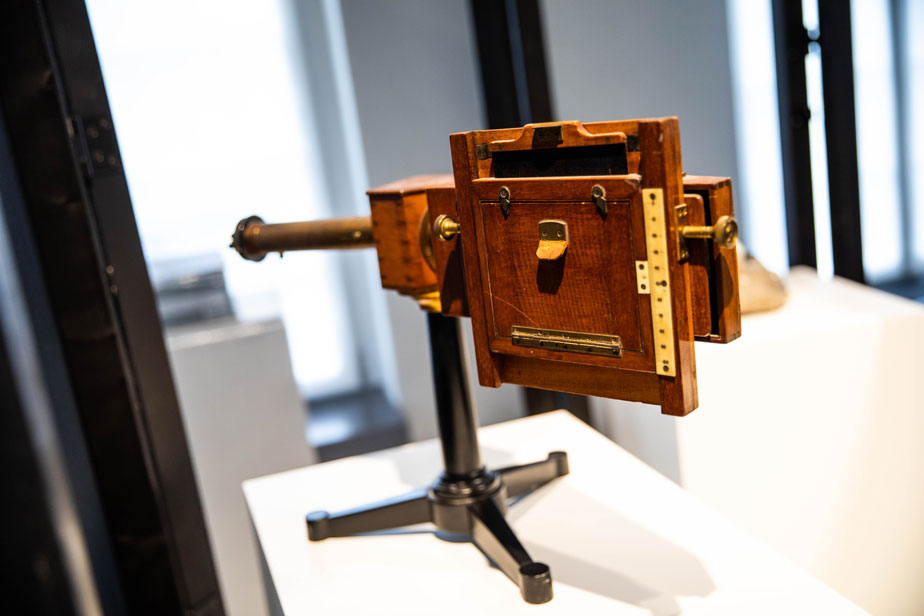
Hamburg biographies
In this interview, a machinist born in 1921 talks about his childhood in the Friedrich-Ebert-Hof, a residential complex built in the 1920s in the Hamburg district of Bahrenfeld. It belongs to the Hamburg Narratology Archive, an ethnological research archive at Universität Hamburg housing roughly 550 original soundtracks with interviews conducted for research projects. Some of these interviews, conducted between 1977 and 1983, document the life stories of Hamburg laborers—an important source of Hamburg’s social history.
Museum of Medical History Hamburg
Operations with anesthesia were first performed about 170 years ago by an American dentist who used ether. The German surgeons von Esmarch and Schimmelbusch further developed the method by sprinkling chloroform on a covered wire mask and holding it in front of the patient’s nose. These anesthesia masks were standard until the early twentieth century. Today, they are among the many objects housed in the Museum of Medical History’s collection in Eppendorf. The museum, located in an historical hospital building, is open to the public on Wednesdays and weekends.
Snake wine
This alcoholic souvenir from Southeast Asia was confiscated by Hamburg’s customs agents—and rightly so: experts at the Zoological Museum identified what turned out to be a protected species of snake. It was no longer necessary to identify the scorpion and ginseng. The customs offices at the airport, the post office, and the harbor have been relying on University expertise since 1981, including for the training of customs agents. Customs usually destroys illegally imported goods. In this case, the Museum was allowed to keep the bottle for teaching purposes.
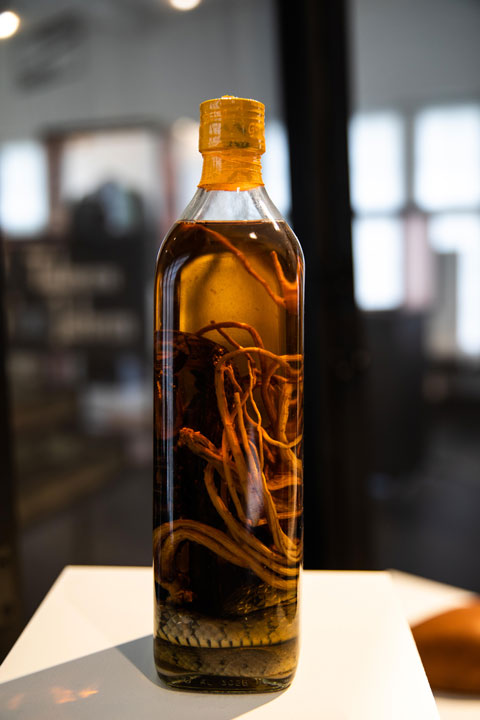
Geological-Paleontological Museum
Ammonites were ocean-dwelling cephalopods, a class that includes the modern-day squid. They died out about 65 million years ago. Their calciferous shells were preserved and are now among the best index fossils, because it is easy to link the rock layer in which the fossil is found to specific geologic time periods. This object is part of the Geological-Paleontological Museum’s collection housed in the Geomatikum on Bundesallee. The exhibition on the evolution of Earth and life is open to the public from Mondays to Fridays.
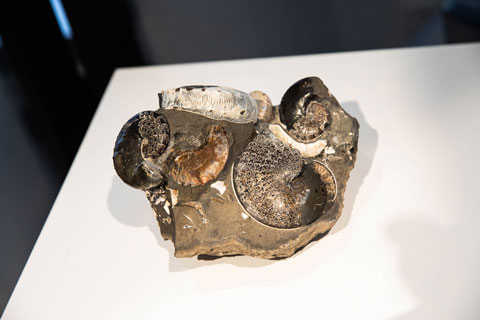
A well-informed city guide
His teaching material was Hamburg. Hermann Hipp, an art historian who taught at the University until 2010, studied Hamburg’s art, architecture, and urban planning as a scholar and university teacher. His weekend tours of Hamburg’s many districts delighted his students. The greater public also benefited from his extensive knowledge of the city and its architectural history by reading his guide to Hamburg art, published in 1989.
A reference work on the city’s history
Forty-nine authors illuminate the city and its history in over 1,200 articles. This comprehensive work, already in its fourth edition, was created by the Arbeitsstelle für Hamburgische Geschichte, a research center dedicated to Hamburg’s history, between 1994 and 1998. The center, founded following a resolution by the Hamburg Parliament in 1992, is now part of the Department of History at Universität Hamburg.
Who’s who in Hamburg
This reference work is a collection of biographies of people who have shaped Hamburg from the ninth century to the present. The University’s Arbeitsstelle für Hamburgische Geschichte, a center for research on the city’s history, oversees the series. The seventh volume is due for publication in 2019. Contributors to the project are roughly 300 authors and non-university municipal institutions such as the Association for Hamburg History, the Institute for the History of the German Jews, the Museum for Hamburg History, the city archives, the State and University Library Carl von Ossietzky, and many more.
Hamburg’s cultural history
How did Hamburg become a major city of business and trade as well as home to the arts and sciences? The University’s inter-disciplinary research alliance on Hamburg’s cultural history answers this and other questions. Since 2007, it has consolidated scholarly work on this topic within and outside the University. In the Andocken (“docking”) lecture series, members of the research group present their findings to the public. Thirty-five of these lectures were published under the same title in 2012.
Hamburg’s plants and flowers
What grows where in Hamburg? Brief portraits and distribution maps provide an overview of Hamburg’s species diversity and plant life. It took fifteen years to collect the data. The botanist and former custodian of the University’s Herbarium oversaw the project. Over sixty volunteer map makers from the Hamburg Botanical Association searched for plants, square kilometer by square kilometer, while the Ministry of Urban Development and Environment contributed biotope mapping.
Understanding modern art
Since 1981, Hamburg’s Ministry of Culture has sponsored a program on Hamburg’s public art. Although works of art can be found all over Hamburg, many people know little about them. Uwe Fleckner’s reference work provides a bit of help. The art historian, who has taught at the University since 2004, offers a selection of the most important works in forty informative short essays and color photographs. There is a city map with the art works in one of the neighboring display cases.
Lütt beten platt—Learn hamburgese!
Containing 6,500 words, this compact volume covers just about one-sixth of the lower German words and sayings spanning eight centuries that are collected in a larger five-volume dictionary of Hamburgese. The research center at the University, which has the same name as the dictionary, spent decades preparing the reference work, which was published from 1986 to 2006. While these impressive five volumes form an important foundation for research, the smaller dictionary was conceived for the broader reading public.

